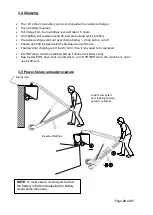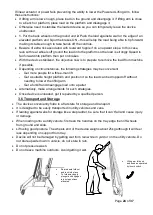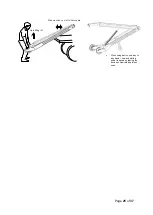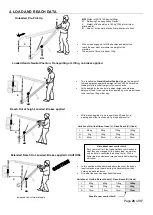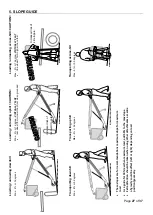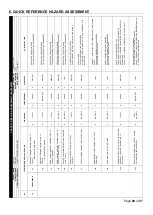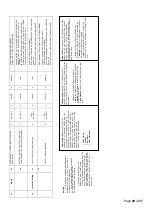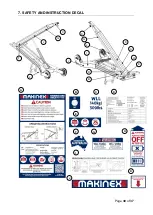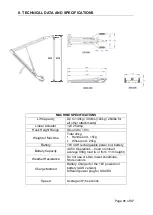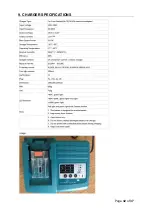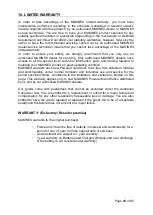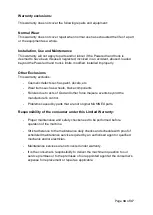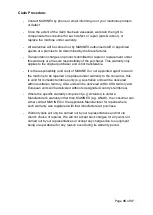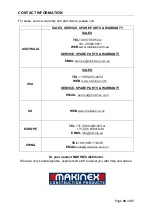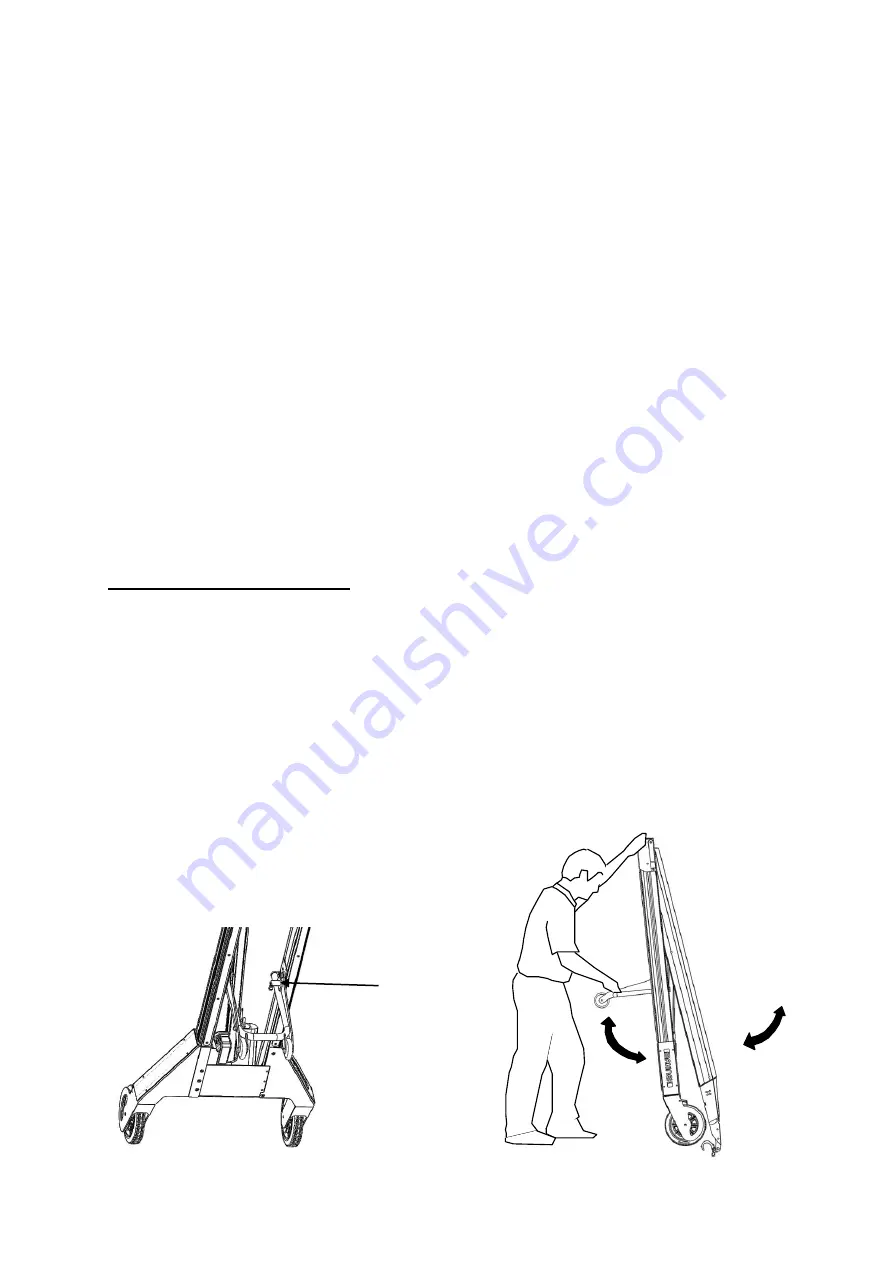
Page
24
of
37
3.6 Transport and Storage
•
Lifting arm folds up
and down as operated
by thumb switch
•
Rear wheels fold out
and lock into place
•
To fold away apply
plunger and engage it
into hole positions
allocated
If linear actuator or power fails preventing the ability to lower the Powered Lifting Arm, follow
these instructions:
•
If lifting arm is low enough, place load on the ground and disengage it, if lifting arm is close
to a bench or platform, place load on the platform and disengage it.
•
Otherwise need to stabilise the loaded device so you can temporarily leave the device
unattended.
•
1.
Put the back wheels on the ground and
2.
Push the load against a wall or the edge of an
elevated platform and
3.
put the brakes ON
– this will stop the load being able to tip forward,
making it stable enough to take hands off the controls.
•
Beware of extra risk associated with rearward topple if on an upward slope. In this case,
lean with rear wheels off ground the load into the platform so the load is strongly biased to
fall forward into platform then put on brakes.
•
With the device stabilized, the objective now is to prepare to remove the load from machine
if possible.
•
Depending on circumstances, the following strategies may be convenient
- Get more people for a three-man lift
- Get a suitable height platform and position it so the load can be dropped off without
needing to lower the lifting arm
- Get a forklift and disengage load onto a pallet
•
Alternatively, make arrangements for such strategies.
•
Once device is unloaded, get it repaired by a qualified person.
•
The device conveniently folds to a flat state for storage and transport.
•
It is designed to be easily transported in utility vehicles and vans.
•
If leaning against walls for storage like a step ladder, b
e sure that it can’t fall and cause injury
or damage.
•
When loading onto a utility vehicle, first lean the handles on the tray edge then lift wheels
from ground and slide.
•
Lift using good posture. The wheels end of the device weighs about 25kg although it will feel
less depending on support from tray.
•
Device will not be damaged by getting wet from rain while in yard or on the utility vehicle. Do
not store upside down in vehicle, do not store in rain.
•
Do not pressure wash.
•
Do not leave machine outdoors. Avoid getting it wet.
Summary of Contents for PHT2-140
Page 1: ...Rev 0919...
Page 32: ...Page 32 of 37 9 CHARGER SPECIFICATIONS 3A...
Page 37: ...Page 37 of 37...














